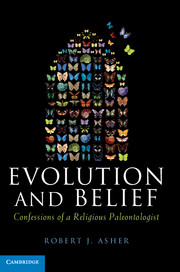Book contents
- Frontmatter
- Contents
- Acknowledgments
- Prologue
- One Science and Religion
- Two Evolution as a Science
- Three Characters and Common Descent
- Four The Fossil Record
- Five The Roots of Mammals
- Six A Brief History of Elephants
- Seven Whales are no Fluke
- Eight Creationism
- Nine DNA And The Tree pf Life
- Ten DNA and Information “Creation”
- Eleven Biology and Probability
- Twelve Evolution, Education, and Conclusions
- Notes
- Bibliography
- Index
Six - A Brief History of Elephants
Published online by Cambridge University Press: 05 March 2012
- Frontmatter
- Contents
- Acknowledgments
- Prologue
- One Science and Religion
- Two Evolution as a Science
- Three Characters and Common Descent
- Four The Fossil Record
- Five The Roots of Mammals
- Six A Brief History of Elephants
- Seven Whales are no Fluke
- Eight Creationism
- Nine DNA And The Tree pf Life
- Ten DNA and Information “Creation”
- Eleven Biology and Probability
- Twelve Evolution, Education, and Conclusions
- Notes
- Bibliography
- Index
Summary
There are many cases in the fossil record of extinct species bridging the apparent anatomical gap between living groups, such as what we observed in the previous chapter between living mammals and the common ancestor we share with crocodiles, birds, lizards, and snakes. One of the other cases that we’ll look at in some detail concerns modern elephants, a group zoologically classified in the Order Proboscidea. At present, there are at least two and probably three species. African elephants belong in the genus Loxodonta and are most commonly grouped in the species L. africana. A smaller species of “forest elephant” has also been proposed, Loxodonta cyclotis. Both are distinct from the Asian elephant, Elephas maximus. These species comprise a minute fraction of the diversity of proboscideans that have existed over the past 60 million years.
- Type
- Chapter
- Information
- Evolution and BeliefConfessions of a Religious Paleontologist, pp. 112 - 124Publisher: Cambridge University PressPrint publication year: 2012

